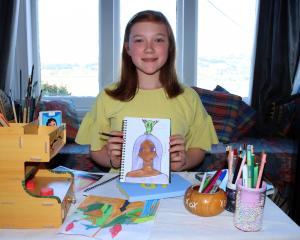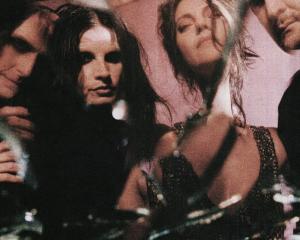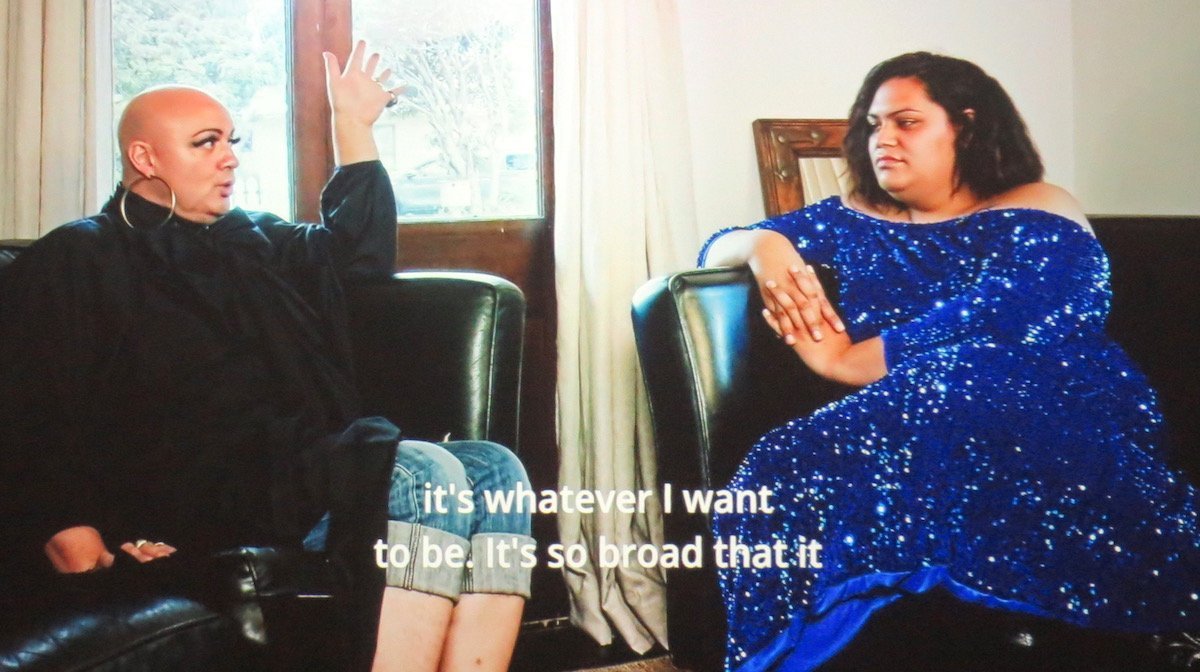
(Tūhura Otago Museum)
David K. Shields’ exhibition at Tūhura Otago Museum is an exploration of what it is like to try to assert, maintain, and even quantify identity within queer culture in a heteronormative society.
Throughout history, gender identity has boiled down to dichotomies: male/female, gay/straight. Today it is becoming seen for what it is, a series of continua along several different axes. Still, however, there is a desire and tendency to pigeonhole people into different identity "boxes".
The current exhibition explores this subject with little fuss and little overt explanation. We are presented with portraits of individuals from within the queer community, portrayed as they wish to be represented.
These are projected on to the walls and we walk between them, recognising ourselves and our friends. These are all different people, with all different views, and they are people just like the rest of us.
Shields uses skills learnt as a fashion photographer to present these strong, open images.
Accompanying these works is a booklet, with each of the "portraitees" presenting a comment on gender identity and gender acceptance. Also presented is a video discussion on the same topic. Finally, and poignantly given recent vandalism, is a photograph of Auckland’s rainbow crossing, the colours adding subtlety and shade to an otherwise black and white world.
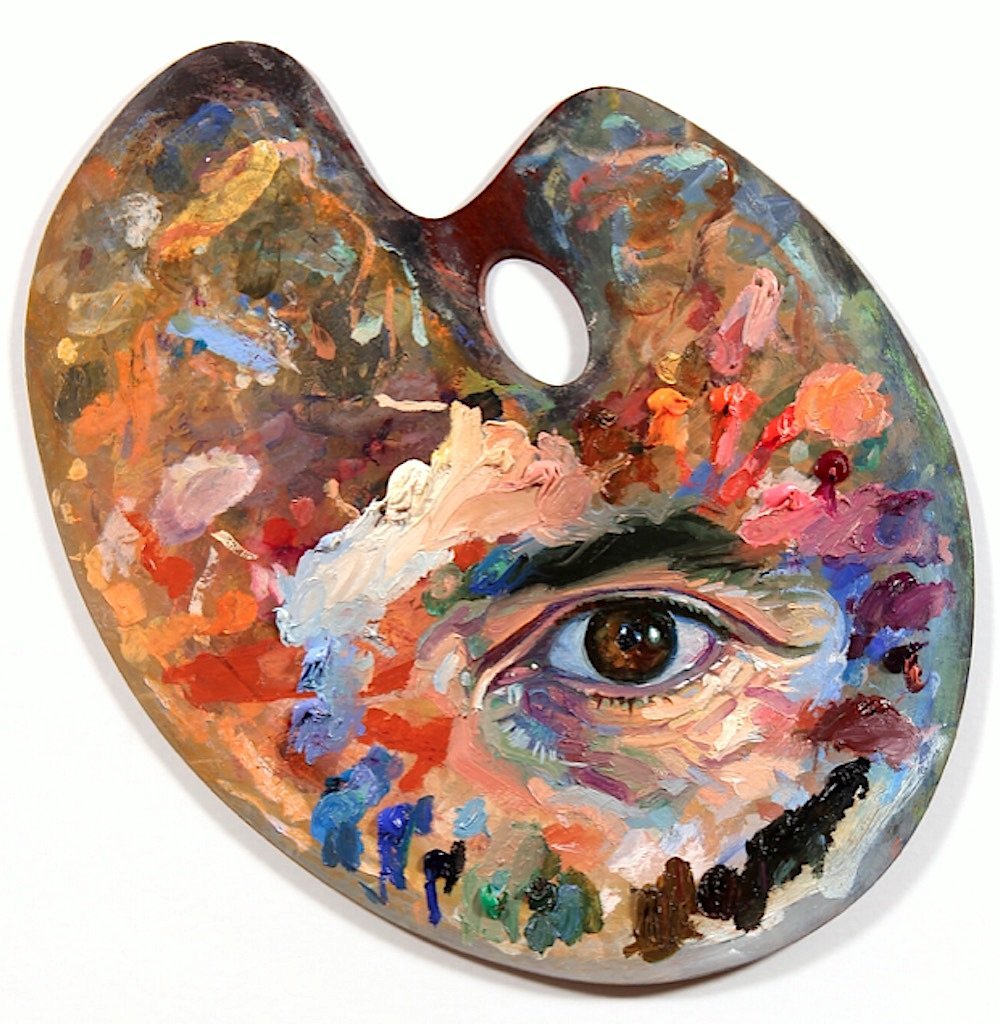
(Milford Galleries Dunedin)
Sandro Kopp presents bold, colourful figure studies flowing in and out between landscape and abstraction.
Kopp’s heady oils are rhapsodies of colour, images seeming to roil and flow in some sort of boiling pot of painterliness. From this visceral chaos, figures emerge. Intertwined and distorted, they become their own background, human form as anthropomorphic landscape. We are drawn in, enveloped in the colour and fleshiness of form — yet exactly what the images are that we are drawn into is for us alone to decide. We see the body as a series of translucent gauzes, simultaneously revealing and obscuring the real nature of the figure.
Starting his work with live model studies, Kopp hunts for the unfamiliar within the familiar: the "jamais vu", that which seems foreign and unknown within the everyday. We see the images primarily as a mass of colour, our perception of the figures jolts our view of the works.
In Kopp’s "Paletteye" paintings, the process of deception and revelation takes a further step. We are met with actual artist’s palettes, presented as the ground over which, again, human features emerge from working paint daubs. What forms do emerge, delicately created eyes, stare back, demanding we decide whether they exist as living entities, while simultaneously mocking us by all too clearly being the works of a painter.
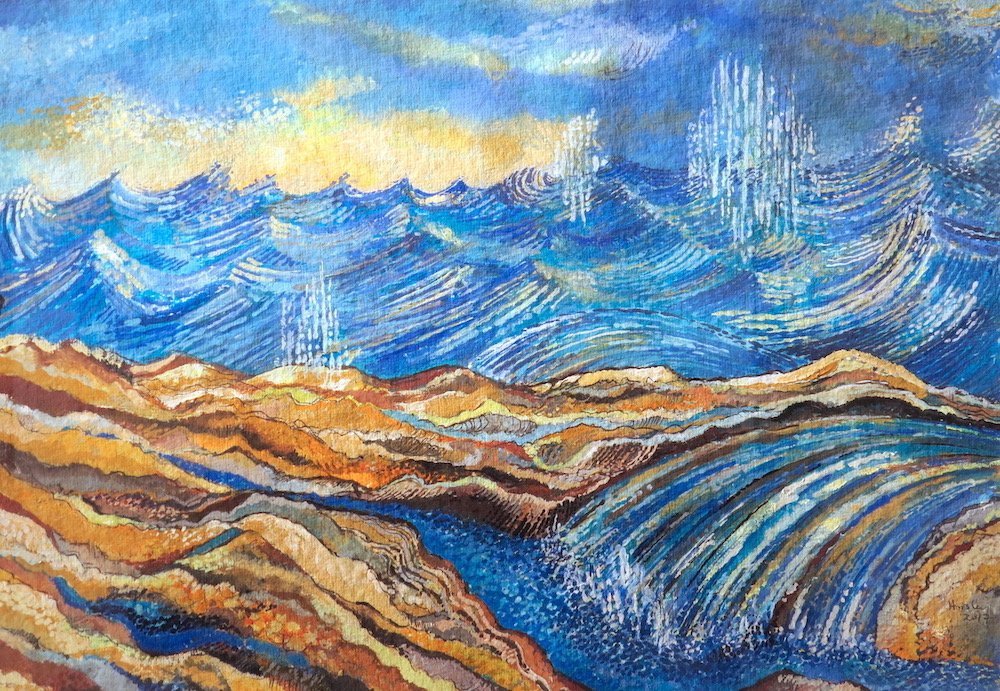
(Fe29 Gallery)
Fe29’s Autumn Collection is a large group show, featuring both new and previously displayed works.
Emphasis has predominantly been placed on groups of works by Christine Hellyar and John Lyall, but there are a wealth of other artists with work present, including an exhibition within an exhibition of works by Kristin O’Sullivan Peren.
Christine Hellyar’s hanging multimedia installations and bronze and wood "hopeless hooks" are dotted around the gallery, and her whimsical smaller "Lookout" works and the strong bronze "Found ferns" are a welcome sight. John Lyall’s bold oilstick drawings are also impressive, as are two meccano "Moa" assemblages.
Peren’s work, prominently displayed in the office gallery space, is in the form of a series of bold monotype and oil works is a rich indigo blue, each inspired by landscape. These sit well alongside the blue glass of Emma Camden’s cast "Gateway".
Other artists whose works draw the eye include John Drawbridge’s soft and elusively shifting mezzotints, two small moody acrylic portraits by Viky Garden, and series of bronzes by both Tanya Ashken and Marian Fountain. Jim Wheeler’s delicate botanical sculptures and two strong lino cuts by Robert Macdonald are also impressive, as are several works, both in gouache and in bronze, by Hamish Horsley.
By James Dignan




